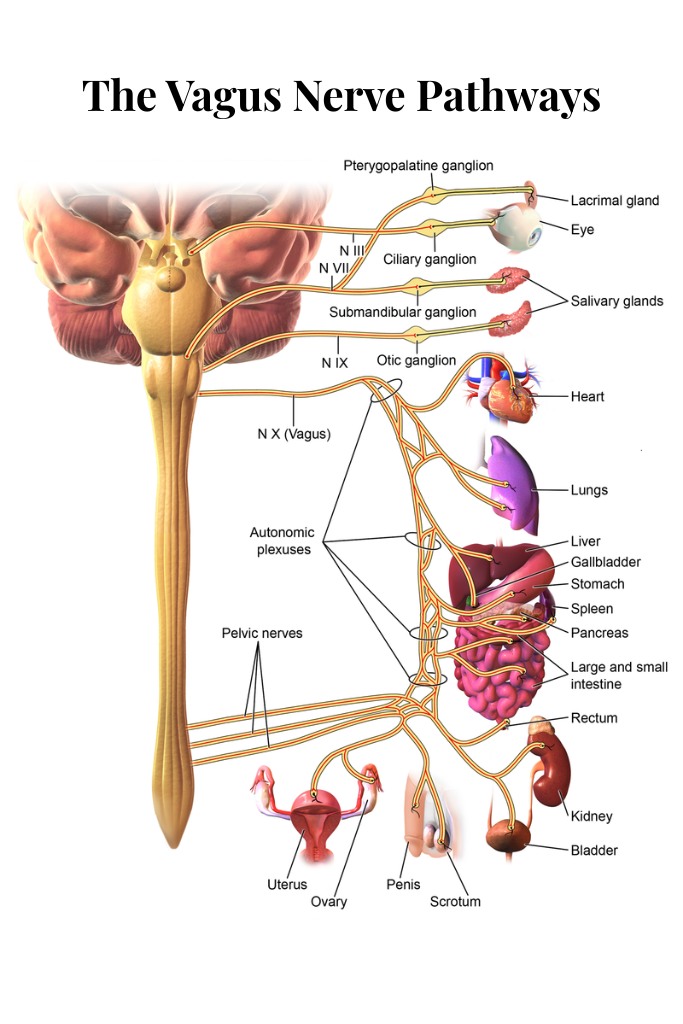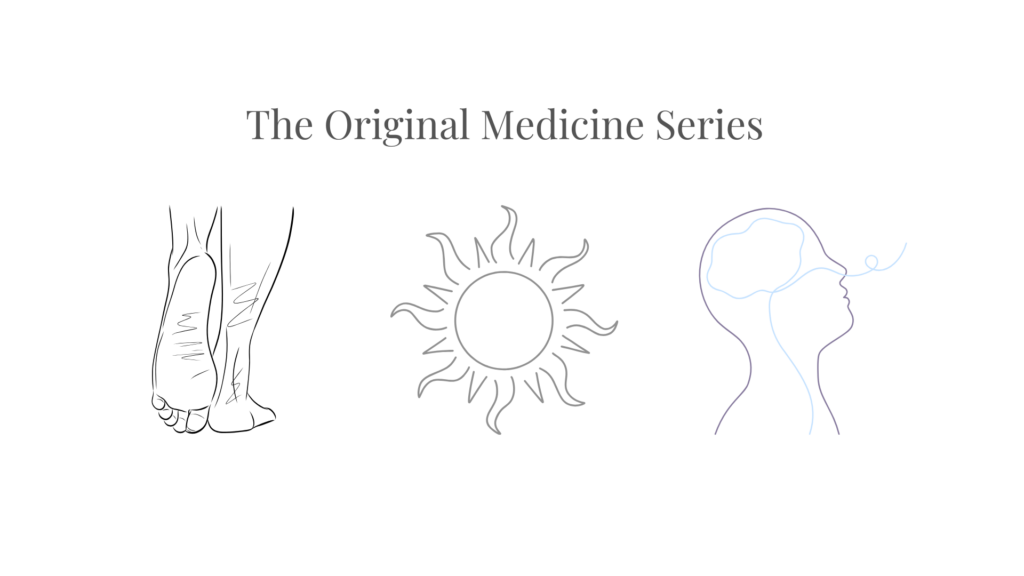 How one quiet nerve holds the key to healing—mind, body, and spirit
How one quiet nerve holds the key to healing—mind, body, and spirit
We don’t talk enough about the vagus nerve. Which makes it even more surprising because this quiet little powerhouse might just be the most important nerve in your body that you’ve never heard of.
It runs from your brainstem all the way down to your gut, touching your heart, lungs, liver, and nearly every major organ along the way. Like a master switchboard, it keeps the lines of communication open between your brain and body—especially when it comes to digestion, detox, mood, and hormones.
But here’s what I’ve learned: if we want real healing—not just symptom management—we have to work with the whole system. That includes not just the body, but the mind and spirit, too. The vagus nerve connects all three.

The bridge between systems
The vagus nerve is the anchor of your parasympathetic nervous system—your “rest and digest” setting. When it’s in functioning optimally, digestion flows. Hormones balance. Stress softens. Emotions settle.
It’s the bridge between how you feel emotionally, how your body functions physically, and how you show up energetically in the world.
I think of a client I’ll call Sarah. She came in with chronic bloating, irregular digestion, and hormone-related mood swings that left her feeling like a stranger to herself. The labs pointed to IBS and estrogen imbalance—but we both knew this wasn’t just about toxicity, diet or hormones. She felt stuck—physically, yes, but also emotionally and spiritually.
Her system wasn’t just inflamed—it was overwhelmed.
And the vagus nerve was caught in the middle.
What happens when vagal tone is low?
When this nerve isn’t firing correctly, nothing flows the way it should.
You may notice:
- Constipation or sluggish digestion
- Brain fog and emotional reactivity
- Difficulty sleeping or feeling calm
- Hormonal shifts that feel unpredictable
- A sense of disconnection—from your body, your clarity, or even your purpose
These aren’t just physical symptoms. They’re signals. They’re the body’s way of saying: Something needs tending.
Healing from the inside out
I didn’t throw a complicated protocol at Sarah. We began with presence and partnership—supporting her nervous system to feel safe again.
She started with:
- Gentle breathwork to bring her home to her body
- Cold splashes to the face to reawaken her vagal tone
- Daily humming or singing to soothe her system
- Short nature walks to reconnect with Nature’s rhythms
- A few weekly coffee enemas to open detox and clear the emotional weight held in the gut
And over time? Her digestion stabilized. Her mood softened. Her sleep deepened. But more than that—she started feeling like herself again. Present. Peaceful. Clear.
Because we weren’t just chasing symptoms. We were listening to her body’s wisdom—and giving the mind and spirit room to breathe.
The vagus nerve doesn’t shout. But when it’s supported, it quietly reweaves the threads of your system into something more whole.
This is the deeper work. It’s not about fixing one thing—it’s about restoring connection across all things.
Mind. Body. Spirit.
Let’s start there.
 Imagine this.
Imagine this.
 The Original Medicines: A 3-Part Series
The Original Medicines: A 3-Part Series This article is part of a three-part blog series called The Original Medicines, exploring the healing power of grounding, sunshine, and breath.
This article is part of a three-part blog series called The Original Medicines, exploring the healing power of grounding, sunshine, and breath.
 Tell someone to eat better, exercise more, or get some sleep, and what happens? They’ll nod, agree… and then do the opposite. Not because they don’t know better, but because habits are stronger than knowledge.
Tell someone to eat better, exercise more, or get some sleep, and what happens? They’ll nod, agree… and then do the opposite. Not because they don’t know better, but because habits are stronger than knowledge. Your brain isn’t lazy, and it isn’t broken. It’s doing its job every second of every day, keeping you focused, creative, and alive. But there’s a problem: it’s working in a world that wasn’t built to protect it.
Your brain isn’t lazy, and it isn’t broken. It’s doing its job every second of every day, keeping you focused, creative, and alive. But there’s a problem: it’s working in a world that wasn’t built to protect it. We love certainty. We love to categorize, label, and defend. Vegan vs. carnivore. Keto vs. high-carb. Every camp has its champions, its research, its long-winded arguments about why this way is the right way.
We love certainty. We love to categorize, label, and defend. Vegan vs. carnivore. Keto vs. high-carb. Every camp has its champions, its research, its long-winded arguments about why this way is the right way. Inflammation is the villain.
Inflammation is the villain. Ever wake up feeling sluggish, foggy, or just off? Nature had an answer for us long before we asked.
Ever wake up feeling sluggish, foggy, or just off? Nature had an answer for us long before we asked.




